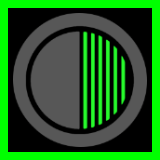INCIDENCE
Australia: 112 per 100,000 population
Globally varies
Asia 53 per 100 000 person-years
Europe 86.4 per 100 000 person-years
North America 98 per 100 000 person-years
AGE & GENDER: 66
Median age: 66 years
Male: 66%
LOCATION
% ARRESTS THAT HAPPEN AT HOME vs IN PUBLIC
CPR
% ARRESTS WITH BYSTANDER CPR
RHYTHM
% SHOCKABLE INITIAL RHYTHM

80% OOHCA have a cardiac cause of arrest.
This proportion is slightly decreasing with time.
Cardiac causes (up to 80%)
- Ischaemic heart disease
- Acute myocardial infarction
- Non-atherosclerotic disease of the coronary arteries
- Lethal arrhythmia without ischaemic heart disease
- Wolff-Parkinson-White syndrome
- Long QT syndrome
- Brugada syndrome
- Catecholaminergic polymorphic ventricular tachycardia
- Cardiomyopathy
- Acute on chronic heart failure
- Acute heart failure secondary to valvular heart disease
- Myocarditis
- Dilated cardiomyopathy
- Left ventricular non-compaction cardiomyopathy
- Hypertrophic cardiomyopathy
- Arrhythmogenic right ventricular cardiomyopathy
- Other infiltrative or inflammatory myocardial disease, or both
- Valvular heart disease
- Congenital heart disease
Non-cardiac causes
- Trauma
- Malignancy
- Non-traumatic bleeding
- Gastrointestinal
- Gynaecological
- Cerebrovascular
- Acute aortic dissection
- Asphyxia
- Submersion (near drowning)
- Hanging
- Hypoxia
- Pneumonia
- Asthma or chronic obstructive pulmonary disease
- Carbon monoxide poisoning
- Pulmonary embolism
- Drug overdose
- Hypoglycaemia
- Hypothermia
- Epilepsy
- Septic shock
- Dehydration and malnutrition
The causes are not listed in order of frequency and the list is not intended to be exhaustive.
REVERSIBLE Causes (which include the above):
> Hypoxaemia
> Hypovolaemia
> Hypo/Hyperkalaemia and other metabolic disorders including acidosis and disturbances of magnesium and calcium
> Hypo/Hyperthermia
> Tension pneumothorax
> Tamponade: pericardial
> Toxins/poisons/drugs including carbon monoxide, and cyclic antidepressants
> Thrombosis: pulmonary embolus /acute myocardial infarction.
[Flow diagram, dividing into cardiac and non-cardiac causes?]
REF
LOCATION
Public (18%) vs other (82%) 1
BYSTANDER CPR
41% receive bystander CPR 1
ATTEMPTED RESUSCITATION
48% have attempted resuscitation by EMS 1
INITIAL RHYTHM
[Pie chart]
VT/VF 28%
PEA 25%
Asystole 47% 1
The proportion of patients with an initial shockable rhythm is decreasing
OUTCOMES
Of those resuscitated:
28% survive the initial event
12% survive to hospital discharge or 30 days
95% of patients surviving to hospital discharge had an initial shockable rhythm 4
Only 4% of patients with PEA survive to hospital discharge 4
BELOW – pie chart image map pro with images of rhythm strips
VT/VF 28%
PEA 25%
Asystole 47% 1
The proportion of patients with an initial shockable rhythm is decreasing
BRAIN INJURY AFTER CARDIAC ARREST
Withdrawal of life-sustaining therapy due to poor neurological recovery is the most common cause of death in patients admitted following cardiac arrest
Neurological disability can vary dramatically from no deficits to very severe disability
Receives 15% of cardiac output
- Cerebral blood flow (CBF) = approximately 750 mL/min
Accounts for 20% of body’s total basal O2 consumption
- Cerebral metabolic rate of O2 consumption (CMRO2) at rest = 50 mL/min
- Organ with the highest metabolic requirements despite being only 2% of total body weight
Very sensitive to interruptions in blood supply and hypoxia because:
- It has a high CMRO2 i.e. high oxygen demand
- It is almost entirely dependent on oxygen-dependent metabolism of glucose for energy and does not store any substrate (glucose or oxygen), therefore requires a constant and uninterrupted blood supply
> Loss of cardiac output results in cessation of cerebral blood flow
> Neurons are dependent on glucose for energy and have no nutrient stores → neuroglycopaenia and metabolic crisis occur within minutes → cell death
> Reduced cerebral oxygen delivery from loss of CBF → cerebral lactate accumulation and intracellular acidosis from anaerobic metabolism → cell death
> Dysfunction of energy-dependent ion channels leads to neuronal and endothelial dysfunction → cerebral oedema, formation of microthrombi and cell death
Subsequent brain injury may occur from:
- Reperfusion injury
- Microcirculatory dysfunction
- Impaired cerebral autoregulation
- Hypoxaemia/hyperoxia
- Hyperthermia
- Altered pCO2
- Anaemia
Most susceptible structures:
- Hippocampus
- Thalamus
- Basal ganglia
- Cerebral cortex
- Cerebellum
- Corpus striatum
